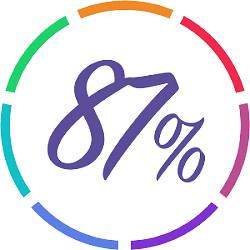Planting the seeds for post-traumatic growth
Post-traumatic growth (or PTG) is the idea that in the long run, traumatic events and experiences can have beneficial effects and people report feeling more appreciative of their lives, and sense a new inner strength and confidence.
As a cancer survivor I understand this concept well. I stared my ‘ending’ in the face until my treatment was deemed successful. Although still in remission for another 3 years, I now feel more balanced and satisfied in my life and I am sure it has come from struggling with a traumatic life event, which forced me to re-evaluate. Now, post trauma, I see what my priorities and values truly are – family, friends, community and health (physical and mental)! Post-traumatic growth is possible, it just needs a few factors to help it get seeded.
“I now feel more balanced and satisfied in my life and I am sure it has come from struggling with a traumatic life event, which forced me to re-evaluate.”
Coming together for psychological growth
This pandemic has given many people an insight into what it is like to have your life and livelihood put under threat, as those with long term or critical illness suffer. This nation-wide shared experience is an opportunity for us all to understand suffering and to be empathic, compassionate and supportive towards each other.
Science says that when we ‘tend and befriend’ rather than ‘fight or flee’, we can bond and build better relationships, reducing the negative effects of stress and increasing the chances of growth. Facing a crisis collectively increases social support, better mental health, and healthier lifestyles with less severe stress reactions. Research following the SARS epidemic in Hong Kong found these positive changes in those who experienced significant trauma.
Ways to make the connection
The development of deeper relationships is a strong factor in post-traumatic growth, so physical connection and contact with those we live with is important, and it also boosts the protective hormone oxytocin. Video calls, and phoning friends and family to literally see and hear them will also strengthen bonding.
Any digital connection is great to keep relationships alive and support active. Texting and social media platforms can enhance some sense of connection, but be authentic in your communications, remember the lack of non-verbal cues can mean misinterpretation and beware of comparisons.
Step back to see the bigger picture and find your values
There is a therapeutic imaginative tool that asks clients to imagine themselves on their death-bed talking to their grandchild, or a significant younger person, even their younger self. Put yourself in this position: what would you tell them was good in your life and what advice would you offer them about their life? This is a stark question but focuses the mind on what is important.
Appreciate what life does offer and show gratefulness where you can
When my children were small, I always asked them at the end of each school day what went well today, rather than what happened today. Always it elicited a positive response, which made them feel good.
Through my cancer, I applied this to myself throughout each day and I noticed more of the pleasant moments more frequently, which helped me keep perspective.
Consider what is now better for you
Maybe life is a little slower with more time in it. Make sure you continue to use this extra time for you and don’t let it get taken up by additional work or new pressures. Keep active and exercise, and have a daily intention to record what you have been grateful for each day, either privately or by sharing it with those who you live with.
We might not have the freedom to do all that we value right now, but things always pass and change and the pandemic is no different. Continue to do what helps, be kind and soothe yourself, but also start planning for the ways in which you can grow post-pandemic.


